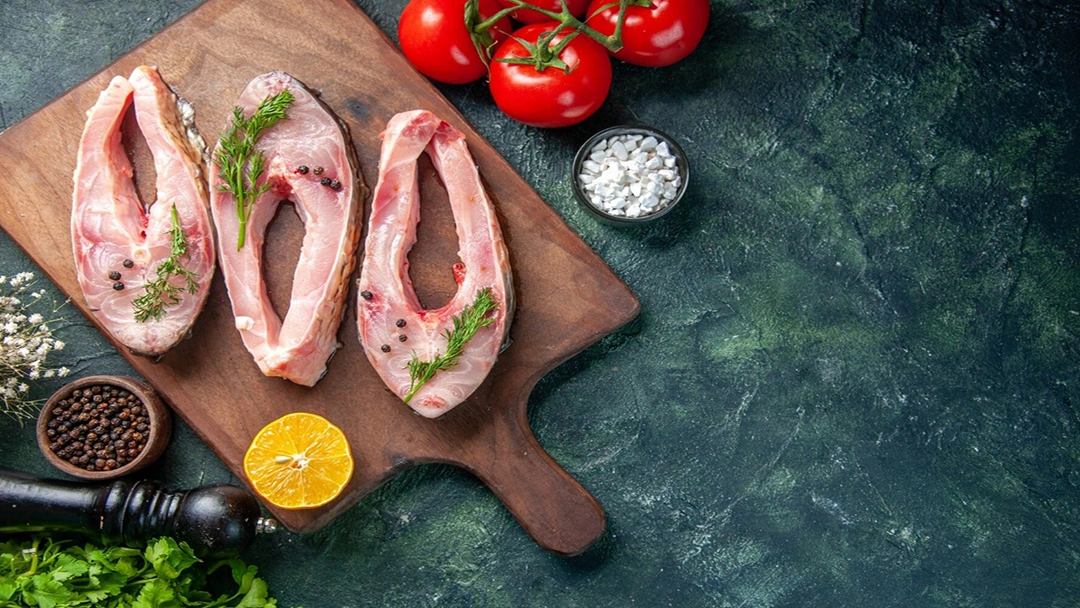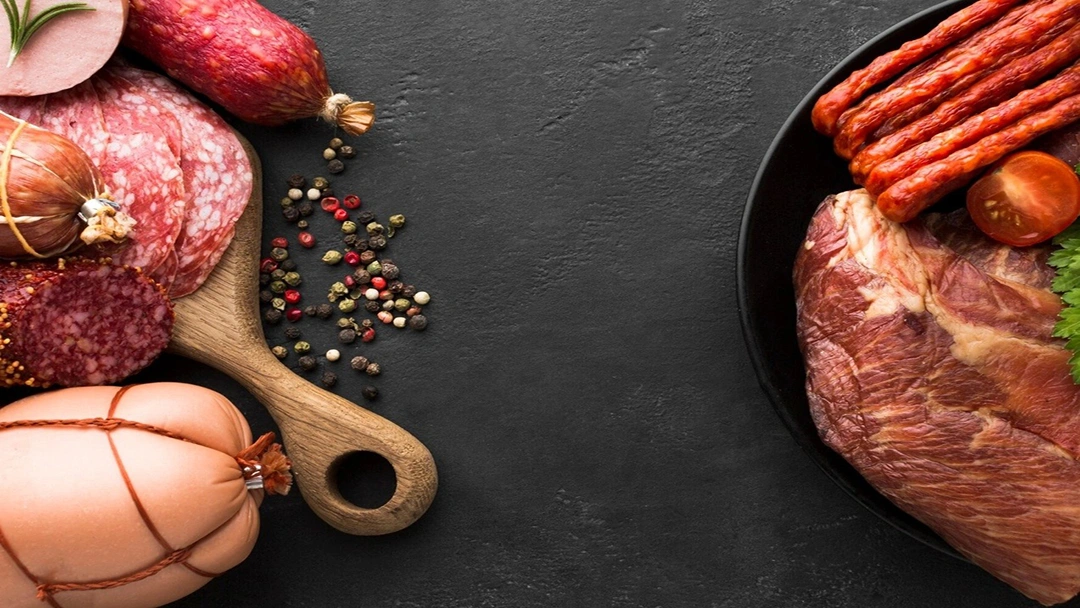4 Ways to Have Soy Sauce on the Carnivore Diet
Here are 4 ways to add soy sauce to your Carnivore meals:
- Add a Tangy Taste to Meats.
- Add Umami Taste to Meals.
- Boost Meat Flavor with Dipping Sauce.
- Enhance Meat Taste with Soy Sauce Glaze.
American Heart Association (AHA):
"Soy sauce is high in sodium, which can contribute to hypertension if consumed in large amounts. Those on a Carnivore Diet should be cautious with its use due to potential health risks associated with high sodium intake."
Add a Tangy Taste to Meats
Combine soy sauce with ingredients like garlic, ginger, and a splash of vinegar to add flavor to meats, such as beef, chicken, or pork, for a tangy and savory marinade.
[cta-meetings]
Add Umami Taste to Meals
Roast sliced meat with vegetables in animal fats, like tallow or lard, then add soy sauce to have an umami flavor.
Learn More: Can I Have Mayonnaise on Carnivore? How to Make It?
Boost Meat Flavor with Dipping in Soy Sauce
Mix soy sauce with other flavorings, such as minced garlic and a pinch of red pepper flakes to create a dipping sauce for grilled or roasted meats.
Enhance Meat Taste with Soy Sauce Glaze
Soy sauce makes a glaze for meat and fish as you can brush it onto a joint of roasted meat, then briefly pop it back in the oven to caramelize.
To use soy sauce in these ways, you must choose the best available sauces with high-quality ingredients and production methods.
Many brands like Kikkoman and Pearl River Bridge are producing high-quality soy sauces available on Amazon. You can see their prices, reviews, and other information by clicking the links below and making a safe online purchase.
Learn More: Can You Have Tabasco Sauce on a Carnivore Diet?
[cta-meal-plan]
The 5 Best Soy Sauces
Here are the top 5 soy sauce brands you can use. They have been selected based on brand reputation, product features, and overall customer reviews.
- Kikkoman Japan Made Soy Sauce,
- Pearl River Bridge Golden Label Superior Light,
- Yamaroku Shoyu Tsuru Bisiho,
- Lee Kum Kee Premium Soy Sauce, and
- San-J Tamari
Kikkoman Japan Made Soy Sauce
Kikkoman soy sauce is made with just four ingredients: soybeans, wheat, salt, and water. It provides a tasty balance of flavors like salty and umami with hints of sweetness, bitterness, and tanginess.
It’s brewed using the traditional Japanese method called “Honjozo”, and has a naturally clear reddish-brown color because no artificial coloring is added.
In the Honjozo method, roasted wheat and steamed soybeans are combined with koji mold (the fermenting agent) and then placed in tanks with brine water, making an unfermented soy sauce solution called Moromi.
[cta-gocarnivore-plans]
The Moromi is left to ferment for 6-8 months before being pressed. The soy sauce liquid is pasteurized and filtered before being aged, bottled, and sold.
Learn More: Carnivore Diet Heavy Whipped Cream
| Pros | Cons |
|---|
| Complex flavor |
Flavor can be too strong for some individuals |
| No coloring additives |
| Naturally produced |
Pearl River Bridge Golden Label Superior Light
You can choose Pearl River Bridge if you’re looking for a light soy sauce. It’s produced in the Southern part of China without any artificial colors. It only has minimal levels of preservatives and a deep savory flavor with intense saltiness.
| Pros | Cons |
|---|
| Naturally produced |
Too salty for some individuals |
| No coloring additives |
Yamaroku Shoyu Tsuru Bisiho
Yamaroku Tsuru Bishio is an aged soy sauce made on the Japanese island of Shikoku. In Japan, soy sauce is called "Shoyu." This particular Shoyu is one of the finest and most expensive soy sauces available. Its rich umami flavor also makes it usable for foods like sushi.
[cta-meetings]
Learn More: The Carnivore Diet and Fruits: Can I Eat Fruits on Carnivore?
| Pros | Cons |
|---|
| Naturally produced |
Expensive |
| Artisanal quality |
Lee Kum Kee Premium Soy Sauce
Lee Kum Kee is one of the best Chinese soy sauces for cooking, especially with pork meat. This soy sauce is made from high-quality ingredients and has a reddish-amber color that makes it different from other soy sauces in appearance.
| Pros | Cons |
|---|
| Can be used in many recipes |
Needs better packaging for shipping |
San-J Tamari
Tamari is a Japanese soy sauce that is very popular in Asian recipes. The main difference between tamari and regular soy sauce is the brewing process and flavor. It doesn’t contain wheat, is gluten-free, and tastes less salty. You can use this tamari soy sauce for dipping and marinating.
| Pros | Cons |
|---|
| No coloring additive |
Package for shipping could be improved |
| Gluten-free |
Remember that if you’re on a strict version of the Carnivore Diet, you can’t eat soy sauce but can use alternatives, such as bone broth.
Learn More: The Bone Broth Diet: Meal Plan and How to Do
[cta-meal-plan]
Soy Sauce Alternatives on the Carnivore Diet
You can use the following animal-based options to add flavor to your Carnivore meals instead of soy sauce. These alternatives have an umami taste like soy sauce, can be used in a variety of dishes, and are low in carbohydrates.
- Bone Broth: Using bone broth as a base for soups and stews can add richness and flavor to your Carnivore dishes.
- Fish Sauce: It’s made from fermented fish and has a salty taste similar to soy sauce. It's a good choice for adding flavor to dishes and boosting electrolytes.
- Aged Cheeses: Flavored aged cheeses, like Parmesan or Pecorino, can add an umami flavor to your dishes.
- Rendered Animal Fats: Using animal-based fats like tallow, lard, and duck fat can be a good option for cooking.
Worcestershire sauce and fish sauce are two soy sauces with similar taste, color, and use. Although they are slightly different in some features, like ingredients, you can use them as substitutes in some recipes.
Soy Sauce vs. Worcestershire Sauce
Soy sauce and Worcestershire sauce are two popular condiments used to add flavor to dishes, but they differ in their ingredients, production methods, and flavors.
While soy sauce is a staple in Asian cuisine, Worcestershire sauce originates in English cuisine and is a fermented condiment made from vinegar, molasses, anchovies, tamarind, and various spices.
[cta-gocarnivore-plans]
It’s not recommended to use Worcestershire sauce on the Carnivore Diet because it has more carbohydrates and less fat than soy sauce. The table below shows a comparison between the features of soy sauce and Worcestershire sauce.
| Features | Soy Sauce | Worcestershire Sauce |
|---|
| Base Ingredients |
Soybeans, wheat, salt |
Vinegar, molasses, anchovies, tamarind |
| Flavor Profile |
Salty, umami, savory |
Savory, tangy, slightly sweet |
| Color |
Dark brown |
Dark brown |
| Common Uses |
Asian cuisine, marinades, dipping sauces |
Western cuisine, meat dishes, cocktails, marinades |
| Gluten Content |
Contains wheat |
Gluten-free |
| Types |
Available in various types, including light soy sauce, dark soy sauce, and low-sodium soy sauce |
Comes in a single form but may have variations in flavor and intensity among different brands |
Soy Sauce vs. Fish Sauce
Fish sauce is a staple in Southeast Asian cuisines like Thai, Vietnamese, and Filipino, with a salty and savory taste, and is made by fermenting fish (generally anchovies) with salt.
You can check the similarities and differences between soy and fish sauce in the following table.
| Features | Soy Sauce | Fish Sauce |
|---|
| Base Ingredients |
Soybeans, wheat, salt |
Anchovies, salt |
| Flavor Profile |
Salty, umami, savory |
Salty, savory |
| Color |
Dark brown |
Light brown to reddish-brown |
| Common Uses |
Asian cuisine, marinades, dipping sauces |
Southeast Asian cuisine, marinades, dressings |
| Gluten Content |
Contains wheat |
Gluten-free |
| Types |
Available in various types, including light soy sauce, dark soy sauce, and low-sodium soy sauce |
Comes in different levels of quality and fermentation, ranging from mild to intense flavors |
[cta-meetings]
Summary
Well, the answer to the question “Can you put soy sauce on the Carnivore Diet?” is generally yes, only if you are not following a strict version of the Carnivore Diet.
Since all plant-based foods are excluded in the strict version, you should use alternatives, like bone broth and fish sauce.
You can use a moderate amount of soy sauce on the Carnivore Diet as a beginner and gradually decrease your consumption because, in the long term, you should stick to the Carnivore Diet’s guidelines and try to avoid plant-based food with a more strict approach.





























